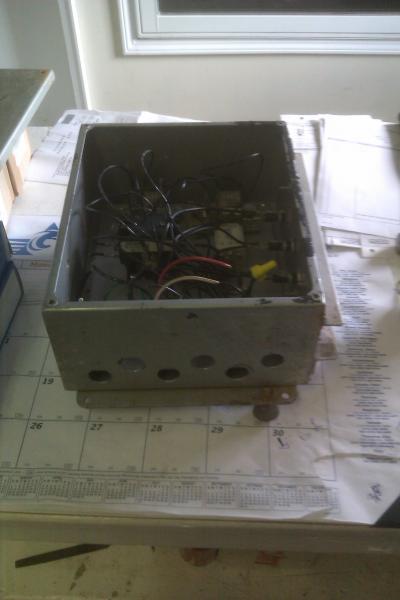rollinred
Well-Known Member
I intend to switch over to full electric next year. The intention is a PID setup with one element in the HLT/Kettle. I will be using my cooler for a MLT and do not intend for a HERMS setup yet.
First point, I am not an electrician nor do I know electrical codes but I do understand electricity and the actual wiring as my job involves in depth understanding of these. So I do not need the responses muddied up with how dangerous water and electricity are nor how an electrician should be called.
I am living in a rented house. I rent from my uncle and could change electrical if necessary but it would entitle spending my own cash for a place I may only be in for another year or so.
The idea is to use the existing outlet for the stove to plug in the control box for the element since it will only be 1 element. The outlet for this breaker is 240v 50a. I can not tell what gauge the wire is as the sheathing does not have the ga. listed. The house is over 70 years old but I can tell for sure that this circuit is not nearly as old.
Question 1: Is it alright to use just a 3 wire connection even if it does not have a dedicated ground since the neutral on a 240v really is the exact same thing as a ground?
I understand the ground is an extra protection measure but in this case it is simply a redundant measure. If necessary it will be easy as pie for me to run a ground strap or rewire to go 4 wire connection.
Question 2: During the summer it would be nice to brew outside. Can someone help with the requirements for wire gauge vs length of run? I am looking at an initial run from breaker to outlet of 25ft then another 20ft from outlet to control panel.
Question 3: Will the GFCI breaker affect operation of the stove? I understand the answer to this is a resounding no in theory but but we all know how touchy a GFCI can be.
I thank you all for reading this long post and helping me on the journey.
First point, I am not an electrician nor do I know electrical codes but I do understand electricity and the actual wiring as my job involves in depth understanding of these. So I do not need the responses muddied up with how dangerous water and electricity are nor how an electrician should be called.
I am living in a rented house. I rent from my uncle and could change electrical if necessary but it would entitle spending my own cash for a place I may only be in for another year or so.
The idea is to use the existing outlet for the stove to plug in the control box for the element since it will only be 1 element. The outlet for this breaker is 240v 50a. I can not tell what gauge the wire is as the sheathing does not have the ga. listed. The house is over 70 years old but I can tell for sure that this circuit is not nearly as old.
Question 1: Is it alright to use just a 3 wire connection even if it does not have a dedicated ground since the neutral on a 240v really is the exact same thing as a ground?
I understand the ground is an extra protection measure but in this case it is simply a redundant measure. If necessary it will be easy as pie for me to run a ground strap or rewire to go 4 wire connection.
Question 2: During the summer it would be nice to brew outside. Can someone help with the requirements for wire gauge vs length of run? I am looking at an initial run from breaker to outlet of 25ft then another 20ft from outlet to control panel.
Question 3: Will the GFCI breaker affect operation of the stove? I understand the answer to this is a resounding no in theory but but we all know how touchy a GFCI can be.
I thank you all for reading this long post and helping me on the journey.


 Wait- what?? Back up the party bus! You drink COFFEE when you brew? SHAME on you!!!!!!!
Wait- what?? Back up the party bus! You drink COFFEE when you brew? SHAME on you!!!!!!! 



